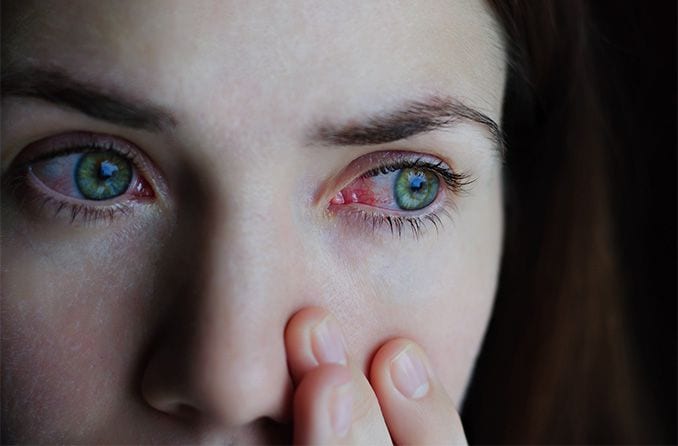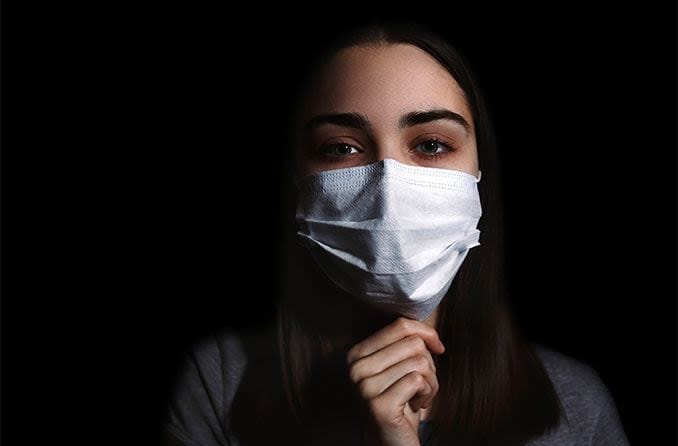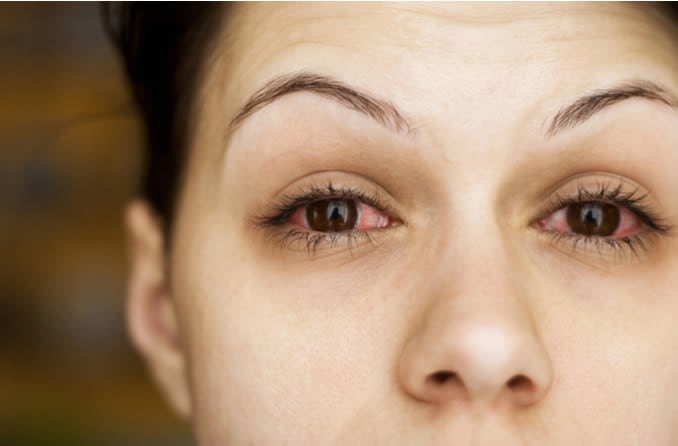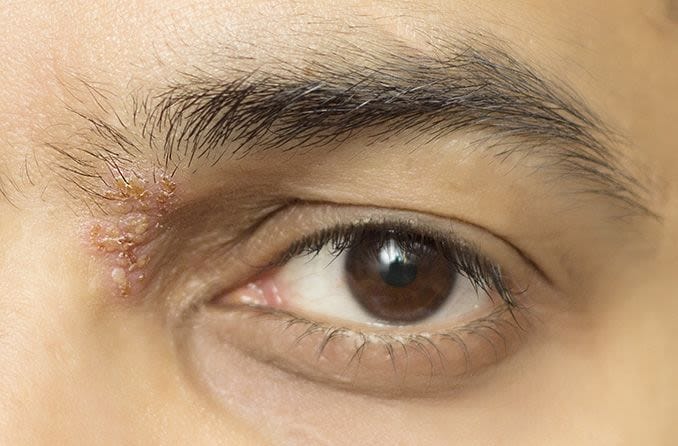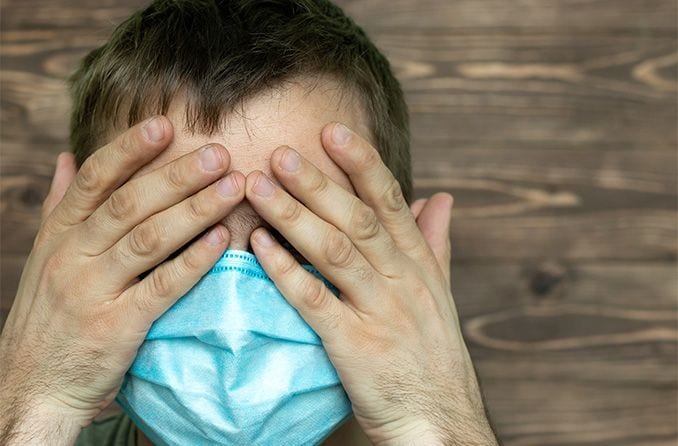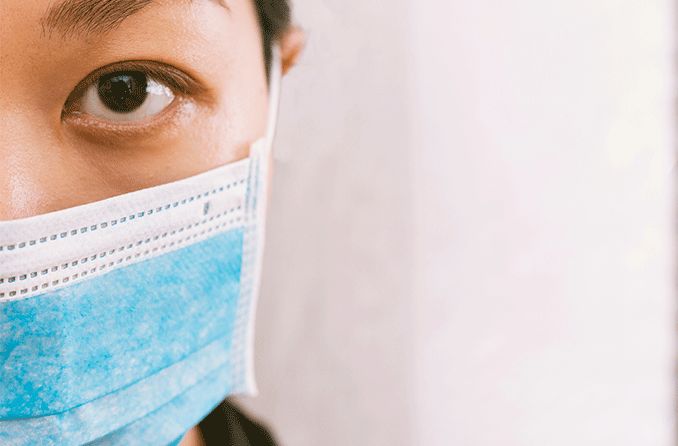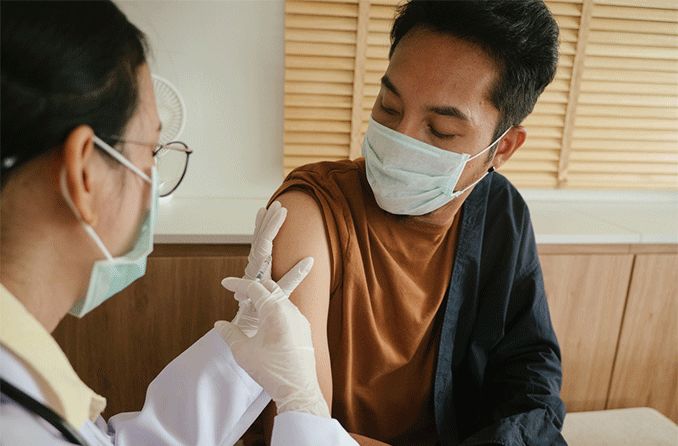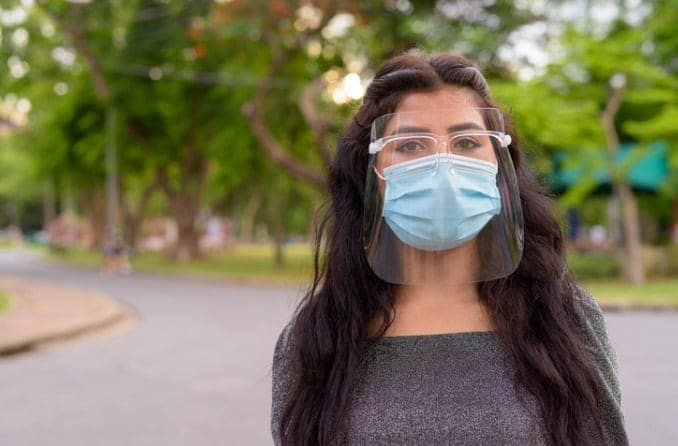Are your eye symptoms from COVID-19 or just allergies?
Since early 2020, we’ve learned that coronavirus symptoms can vary widely from one person to the next. Two cases of COVID-19 can be as different as night and day.
In some cases, COVID-19 can cause eye symptoms.
Some coronavirus infections don’t cause any symptoms at all. When COVID symptoms are present, they can range from mild — like a common cold — to very severe.
The most serious cases require hospitalization and can be life-threatening. Knowing which symptoms to look for can be the difference between staying home and seeking potentially life-saving treatment.
COVID-19 symptoms
Doctors now know that COVID-19 can cause much more than respiratory-related symptoms alone, thanks to many months’ worth of medical data. Some symptoms of COVID, like the loss of taste and smell, are so unusual that researchers still don’t completely understand why they happen.
Health officials and doctors all over the world have turned to the World Health Organization (WHO) for guidance during this global health crisis. The WHO groups coronavirus symptoms into three types:
Common symptoms:
- Fever at or below 100.4 F (38 C)
- Dry cough
- Fatigue
Less common symptoms:
- Pink eye (conjunctivitis)
- Aches and pains throughout your body
- Sore throat
- Diarrhea
- Headache
- Rash
- Loss of taste and/or smell
- Discolored fingers or toes
Serious symptoms:
- Breathing problems
- Chest pain or pressure
- Inability to speak or move
- Fever above 100.4 F (38 C)
The Centers for Disease Control and Prevention (CDC) adds a few more symptoms that warrant emergency medical attention:
- Any new level of confusion
- Difficulty waking up or staying awake
- Skin, lips or nail beds that take on a pale, gray or blue appearance
When COVID symptoms appear
COVID symptoms can take as many as 14 days to develop after you’ve been exposed; however, it’s most common for symptoms to appear between 4 and 5 days after exposure (if they appear at all), the CDC says.
The CDC notes that almost everyone infected with the coronavirus will show symptoms before the 12th day passes (based on a study linking 97.5% of participants to the 12-day timeline).
If you think you might have been directly exposed to someone with COVID-19, the CDC recommends quarantining at home for two weeks. They add that you don’t need to quarantine if you’re fully vaccinated or have tested positive for COVID-19 sometime in the past 3 months and recovered, without experiencing any new symptoms during that time.
IF YOU THINK YOU MIGHT HAVE COVID-19... Call your family doctor. If you think an eye or vision problem is related to the coronavirus, call an eye doctor. Make sure to call ahead; many doctors’ offices have changed walk-in appointment policies and safety measures since the start of the pandemic.
Coronavirus eye symptoms
The WHO list of symptoms above lists one potentially COVID-related eye symptom: pink eye, which is another term for viral conjunctivitis. (Though it’s worth noting that many people use “pink eye” as a blanket term for all forms of conjunctivitis.)
Pink eye is inflammation of the conjunctiva, the membrane inside each eyelid and outside the white part (sclera) of each eye. Conjunctivitis often occurs alongside common upper respiratory infections like colds or the flu — and it can also be a symptom of the COVID-19 virus.
But is it the only eye-related symptom that can come from a coronavirus infection?
A study published in BMJ Open Ophthalmology found that between 16% and 18% of people with COVID-19 had other vision and eye symptoms, including:
While these symptoms can be related to pink eye, the study found that this shouldn’t be assumed, and that such an assumption would be “misleading.”
The study also found that symptoms of bacterial conjunctivitis — like mucus discharge and a gritty feeling in your eyes — were not generally associated with COVID-19.
If you experience any sort of goopy or colored eye discharge, you should see an eye doctor. This could be a sign of a bacterial eye infection and treatment may require prescription antibiotics.
SEE RELATED: COVID-19 and eye soreness: Do they go together?
Allergy vs. coronavirus symptoms
An important difference between COVID-19 and allergies is the presence of fever. Fever is common in people with the coronavirus, but not in those suffering from seasonal allergies.
Dr. Gary Steven, an allergist who works with the American College of Allergy, Asthma and Immunology, told AARP that you should keep track of what makes your symptoms worse when you’re already feeling bad.
“If you’re fine when you’re indoors and the windows are closed, but then you go out on a dry, windy day and start sneezing your head off, yes, that’s an allergy,” Dr. Steven says.
The Asthma and Allergy Foundation of America reminds us that typical symptoms of COVID-19 are fever, dry cough, shortness of breath and tiredness.
“Many of the early symptoms of COVID-19 are similar to other illnesses and allergies, which can make it difficult to tell early coronavirus symptoms from typical allergies, especially this time of year [spring]," Dr. John Cohn, director of the allergy and immunology department at Jefferson University, told the Health Nexus.
"Making the correct diagnosis is a particular problem since those infected vary so greatly in the severity of their illness,” he added.
One positive for allergy sufferers is that allergies are not a risk factor for coronavirus infection, according to a study published in the journal Allergy.
COVID-19, allergies and conjunctivitis
Pink eye develops in only 1% to 3% of COVID-19 cases, according to a press release issued by the American Academy of Ophthalmology (AAO).
But allergies, bacteria and other viruses can also cause pink eye.
If a virus like COVID-19 causes pink eye, the condition usually starts in one eye and moves to the other eye within a few days. Any discharge from the affected eye(s) is normally clear and watery, not thick.
Allergies can also cause a different kind of conjunctivitis, but its symptoms are a little different from the ones associated with viral conjunctivitis. Allergic conjunctivitis usually occurs in both eyes, and can cause eye itching, tearing and swelling.
Conjunctivitis is diagnosed through a comprehensive eye exam, which can also include:
- A review of your symptoms
- Measurements to find out whether your vision has been affected
- Checkups of the outsides and insides of your eyes
SEE RELATED: Coronavirus linked to pink eye: How to protect your eyes
COVID eye symptoms in Seattle nursing home patients
Red eyes unrelated to pink eye may also be a symptom of COVID-19.
A nurse at the Life Care Center in Kirkland, Washington, which had some of the first publicly known cases of COVID in the U.S., told CNN she and other colleagues noticed that what seemed to be “red eye shadow” on the outside of the eyes was common among their patients with COVID-19.
More than two dozen people associated with the nursing home lost their lives from the outbreak.
The American Academy of Ophthalmology mentioned the CNN report in a March 2020 alert to its members, but a definitive tie between this eye redness and COVID-19 hasn’t been proven.
The AAO has since released guidance that notes doctors should probably only be concerned about COVID-19 if eye redness is joined by more typical coronavirus symptoms, such as fever, fatigue, cough, shortness of breath, and/or a loss of taste or smell.
In other words, if your eyes are red and you don’t have other coronavirus symptoms, they’re more than likely caused by an eye infection or allergies.
Even if you do have COVID-19 symptoms, it’s still possible to be infected by a second virus that causes red eyes at the same time.
READ MORE: How red eyes relate to COVID-19
